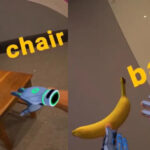As the use of augmented reality (AR) technology gains traction across all sectors of the economy, employer demand for workers with AR skills will increase—as will the need for AR training programs. Many community colleges are acting now to meet the need for training and are developing AR classes and learning experiences.
Jobs for the Future (JFF) recently helped implement pilots of AR training courses at eight community colleges in an effort to identify effective ways to teach people to use AR technology. The project was a success, yielding valuable insights about how to set up an AR training program for the first time. The perspectives of the learners who took part in the training were especially important, revealing key details about nearly every facet of the process of running an AR training program, from recruiting and supporting participants to developing the curriculum.
After the pilots concluded, we spoke with three learners from three of the community colleges to understand what motivated them to participate in the training, what their experiences as first-time AR users were like, and what thoughts and insights they might want to share with policymakers and community college leaders about the value of AR training.
They emphasized the importance of engaging recruitment strategies; patient, attentive instruction; asynchronous learning options; and clear final project prompts that encourage learners to integrate their passions and career interests into their AR training. The three learners also cited challenges like technical hurdles and tight timelines but emphasized the importance of a cohort environment and constructive instructor feedback to overcome these difficulties. They also discussed the benefits of showcasing their work at the conclusion of training to show future learners the wide range of potential ways to use AR and build on programming momentum.
These perspectives should inspire and inform community colleges that are beginning to plan AR programming. They should also be useful for postsecondary leaders and policymakers who want to support innovative training models.
Key Takeaways
- Learners approached AR programming from diverse academic and professional pathways, and with different training goals—from merging AR and UX design to understanding AR’s connection to workforce development needs.
- Learners emphasized the importance of free initial programming, asynchronous learning options, and attentive instruction that communicates the ranges of possible uses of AR.
- Challenges included technical concerns, such as a lack of coding experience and unfamiliarity with platforms, and programmatic hurdles like tight project timelines.
- Learners endeavored to merge AR with their existing skill sets.
- Learners encouraged community colleges to demonstrate AR’s diverse applications to the local community through final project showcase activities, and they emphasized that final project showcases can help improve future efforts to recruit new learners to programs.
- Learners see unique connections between AR and topics like small business needs, workforce development initiatives, and marketing.
- Learners encouraged hesitant students to embrace the challenge of brand-new tech training and focused on the benefits of being ahead of the curve.
The three learners we spoke with are Aquarius Chaney, who participated in training at Mott Community College in Flint, Michigan; Dorian Moe, who participated in training at Southeast Kentucky Community and Technical College (SKCTC) in Cumberland, Kentucky; and Chelsea Aybar, a student at City University of New York’s Hunter College who took part in the AR training at Kingsborough Community College in Brooklyn.
Quelle:
https://www.jff.org/ar-for-all-learner-perspectives-on-augmented-reality-training/


